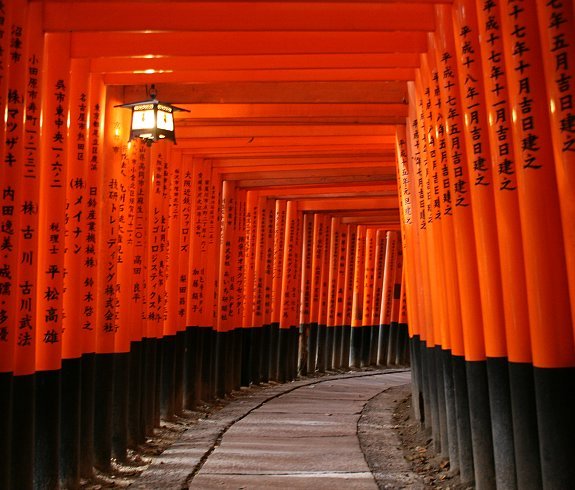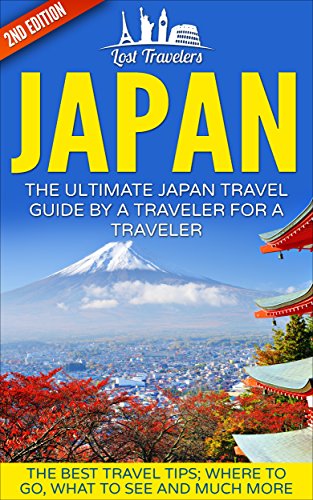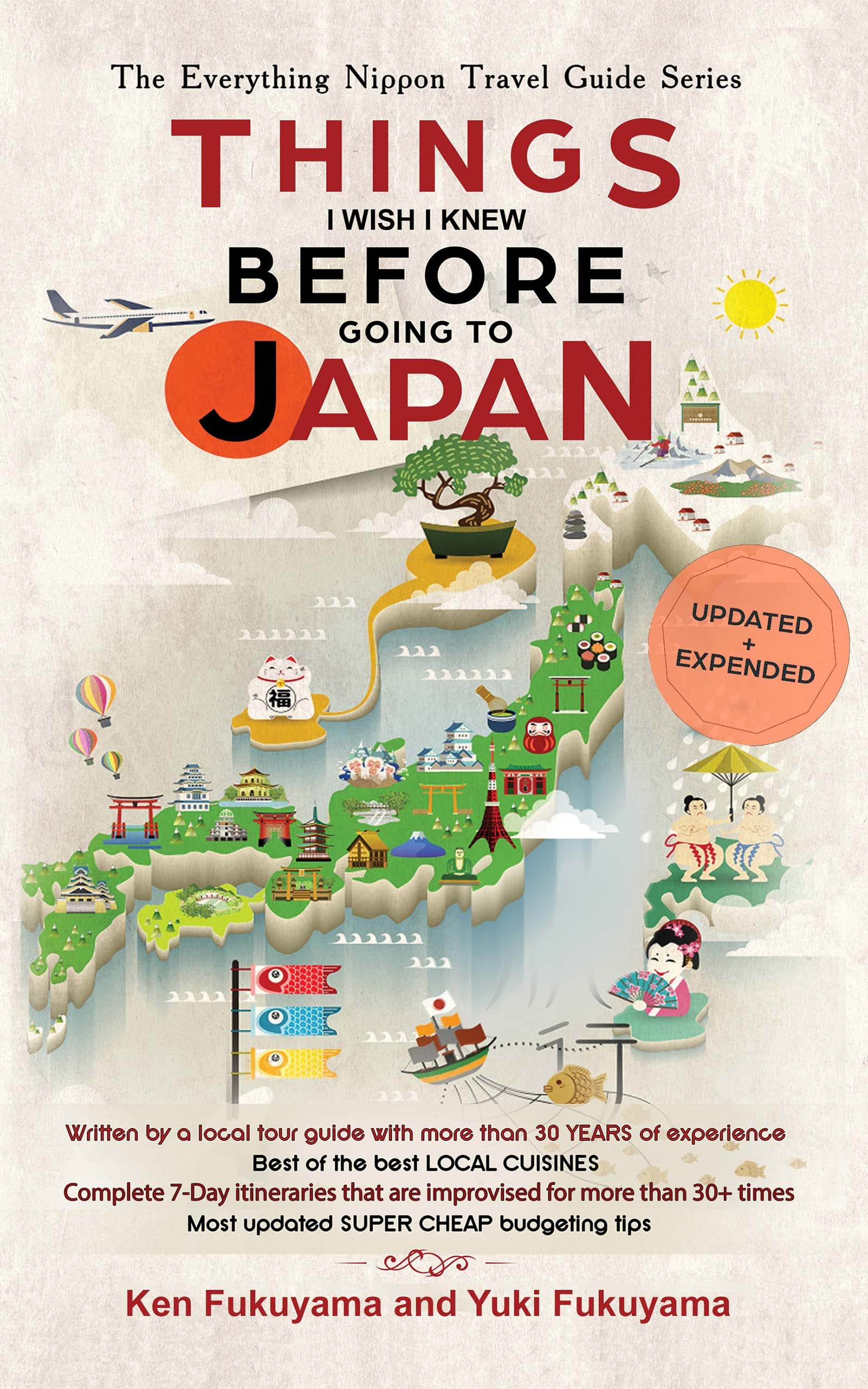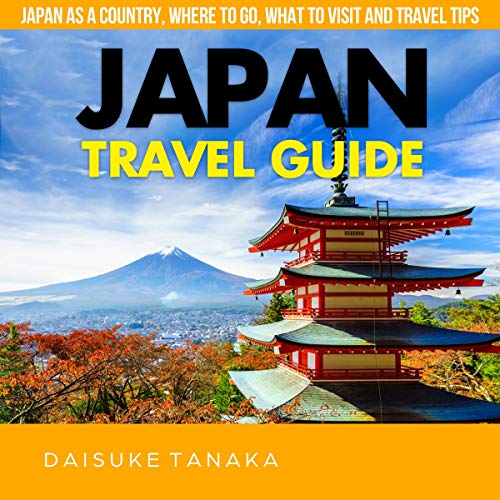Win a Free Trip to Japan!
Experience cherry blossoms and ancient temples
Embarking on your first adventure to Japan can be an exciting yet overwhelming experience. With a rich tapestry of culture, stunning landscapes, and delectable cuisine, it’s essential to prepare yourself. This Japan Travel Guide will equip you with everything you need to know, from navigating local etiquette to discovering must-see destinations. Whether you’re eager to indulge in authentic Japanese dishes or immerse yourself in vibrant traditions, this comprehensive guide will help ensure your journey is smooth and memorable. Get ready to dive into the wonders that await in the Land of the Rising Sun.
Understanding Japan’s Culture and Etiquette
Navigating Japan’s rich cultural landscape can significantly enhance your experience as a first-time visitor. This Japan Travel Guide will help you understand the fundamentals of Japanese culture and etiquette.
- Respect and Politeness: Japanese society prioritizes harmony and respect. Always greet with a bow instead of a handshake, and avoid loud conversations in public spaces.
- Dining Etiquette: When eating, it’s customary to say "Itadakimasu" before your meal and "Gochisousama deshita" afterward. Never stick chopsticks upright in a rice bowl, as this resembles a funeral ritual.
- Gift Giving: Gifts play a vital role in Japanese culture. If invited to someone’s home, bring a small gift, such as sweets or souvenirs.
-
Public Behavior:
- Keep your voice low
- Avoid public displays of affection
- Remove shoes when entering someone’s home
| Cultural Aspect | Dos | Don’ts |
|---|---|---|
| Greeting | Bow your head | Handshake in most contexts |
| Eating etiquette | Use chopsticks appropriately | Stick chopsticks in rice |
| Public conduct | Keep noise level to a minimum | Speak loudly or make a scene |
Understanding these cultural nuances not only avoids embarrassment but also demonstrates respect for local traditions. Incorporate this knowledge into your travels to make the most of your Japan adventure as laid out in the Japan Travel Guide.

Essential Travel Tips for First-Time Visitors
Visiting Japan can be an exhilarating experience, but being prepared enhances your journey. Here are essential travel tips tailored specifically for first-time visitors, ensuring a seamless adventure in this captivating country.
1. Learn Basic Japanese Phrases
- While many Japanese people speak English, knowing basic phrases can help you communicate better. Common phrases include:
- Konnichiwa (Hello)
- Arigatou (Thank you)
- Sumimasen (Excuse me)
2. Carry Cash
- Although Japan is technologically advanced, many establishments still prefer cash.
- Consider bringing small yen denominations for convenience.
3. Respect Local Etiquette
- Bowing is a traditional greeting.
- Always remove your shoes when entering someone’s home or certain traditional establishments.
- Speak softly on public transport.
4. Get a Japan Rail Pass
- For extensive travel, consider investing in a Japan Rail Pass. This can save money on long-distance train journeys.
5. Download Helpful Apps
- Navigation apps like Google Maps are invaluable for getting around cities.
- Consider translation apps to assist with language barriers.
6. Stay Connected
- Rent a portable Wi-Fi device or purchase a Japanese SIM card to stay connected during your travels.
By following these tips, you can maximize your experience and enjoy everything that your Japan Travel Guide unveils!
Best Times to Visit Japan
When planning your trip, selecting the best time to visit Japan is crucial. The climate varies significantly across seasons, each offering unique experiences. Here’s a breakdown to help you navigate your Japan travel guide:
Spring (March to May)
- Highlights: Cherry blossoms (sakura) in full bloom.
- Weather: Mild temperatures, averaging 10-20°C (50-68°F).
- Events: Hanami (flower viewing) parties, numerous festivals.
Summer (June to August)
- Highlights: Vibrant festivals and fireworks.
- Weather: Hot and humid, temperatures reach up to 35°C (95°F).
- Events: Gion Matsuri in Kyoto, Tanabata celebrations.
Autumn (September to November)
- Highlights: Stunning fall foliage.
- Weather: Pleasant, ranging from 15-25°C (59-77°F).
- Events: Momiji (autumn leaf viewing), various regional festivals.
Winter (December to February)
- Highlights: Snow-covered landscapes and winter sports.
- Weather: Cold, with temperatures falling below 0°C (32°F) in some regions.
- Events: Sapporo Snow Festival, New Year celebrations.
Comparison Table
| Season | Key Attractions | Average Temperature | Best For |
|---|---|---|---|
| Spring | Cherry blossoms, festivals | 10-20°C (50-68°F) | Nature lovers, festival goers |
| Summer | Festivals, fireworks | Up to 35°C (95°F) | Culture enthusiasts |
| Autumn | Fall foliage, festivals | 15-25°C (59-77°F) | Photographers, nature lovers |
| Winter | Snow sports, hot springs | Below 0°C (32°F) | Skiers, those seeking uniqueness |
In your Japan travel guide, consider these seasonal highlights to enhance your experience!
Must-See Destinations in Japan
Japan is a land of stunning contrasts, offering vibrant cities, serene landscapes, and rich historical sites. In this section of our Japan Travel Guide, we highlight must-see destinations that will enrich your travel experience.
Top Destinations
- Tokyo: A bustling metropolis, Tokyo blends tradition with modernity. Visit the historic Asakusa district, the towering Tokyo Skytree, and the vibrant Harajuku area.
- Kyoto: Known for its classical Buddhist temples, gardens, and imperial palaces, Kyoto offers a glimpse into Japan’s past. Don’t miss the iconic Kinkaku-ji (Golden Pavilion) and the Fushimi Inari Shrine with its thousands of vermilion torii gates.
- Osaka: Famous for its street food and nightlife, Osaka is a food lover’s paradise. Be sure to try takoyaki and okonomiyaki while exploring the lively Dotonbori district.
- Hiroshima: A city steeped in history, Hiroshima’s Peace Memorial Park commemorates the victims of the atomic bomb. Nearby, visit Miyajima Island to see the famous floating torii gate of Itsukushima Shrine.
- Nara: Home to free-roaming deer and ancient temples, Nara’s Todai-ji Temple houses a giant Buddha statue. It’s a peaceful escape from the hustle of larger cities.
Quick Comparison Table
| Destination | Highlights | Ideal For |
|---|---|---|
| Tokyo | Skytree, Asakusa, Akihabara | Urban enthusiasts |
| Kyoto | Temples, Gardens, Geisha culture | History and culture lovers |
| Osaka | Street food, Nightlife | Foodies |
| Hiroshima | Peace Memorial, Miyajima Island | History buffs |
| Nara | Deer Park, Todai-ji Temple | Nature lovers and families |
Exploring these destinations will truly embody the diverse charm of Japan. This Japan Travel Guide ensures you don’t miss out on any of these incredible experiences!

Japanese Cuisine: Must-Try Dishes
A significant part of your travel experience in Japan involves indulging in its exquisite cuisine. This Japan Travel Guide emphasizes that food in Japan is not merely nourishment; it’s an art form that reflects the country’s rich culture and history. Here are must-try dishes to include in your culinary itinerary:
-
Sushi and Sashimi
- Fresh, beautifully presented raw fish, often served with rice.
-
Ramen
- A flavorful noodle soup that varies by region, with options like Tonkotsu and Shoyu.
-
Tempura
- Lightly battered and fried seafood or vegetables, perfect for dipping in a savory sauce.
-
Okonomiyaki
- A savory pancake filled with a variety of ingredients, often cooked right before your eyes.
-
Takoyaki
- Fried octopus balls, typically served with mayonnaise and a special sauce.
Comparison of Popular Japanese Dishes
| Dish | Main Ingredients | Serving Style |
|---|---|---|
| Sushi | Rice, seafood | Often as finger food |
| Ramen | Noodles, broth, toppings | Served in a bowl |
| Tempura | Seafood/vegetables, batter | Usually with dipping sauce |
| Okonomiyaki | Flour, cabbage, meats | Cooked on a hot plate |
| Takoyaki | Flour, octopus | Served in small balls |
Incorporating these dishes into your journey will undoubtedly enhance your Japan experience. Referring back to this comprehensive Japan Travel Guide will ensure you don’t miss out on culinary delights that are quintessential to the country’s identity.
Navigating Transportation in Japan
When exploring Japan, efficient transportation is essential for a seamless travel experience. Fortunately, the country boasts a highly developed transport network, making it easy for visitors to get around. This Japan Travel Guide will help you navigate the various options available.
Key Transportation Options:
-
Trains:
- Shinkansen (Bullet Trains): Fast and efficient; perfect for long-distance travel.
- Local Trains: Ideal for city travel; frequent stops allow you to explore multiple areas.
-
Subways:
- Major cities like Tokyo and Osaka feature extensive subway systems.
- Purchase a prepaid IC card for hassle-free travel.
-
Buses:
- Affordable and convenient for areas less served by trains.
- Look for express buses for faster routes.
-
Taxis:
- Readily available but can be pricey, especially for long distances.
- Useful for late-night travel or when public transit isn’t operating.
Efficiency Comparison:
| Type | Speed | Cost | Convenience |
|---|---|---|---|
| Trains | Fast | Moderate | High |
| Subways | Moderate | Low | High |
| Buses | Slow | Very Low | Moderate |
| Taxis | Fast | High | Moderate |
In conclusion, understanding transportation in Japan equips you with the knowledge to optimize your journey. Therefore, refer to this Japan Travel Guide to enhance your travel experience and journey between iconic destinations effortlessly.
Accommodations: Where to Stay
Finding the perfect place to stay is crucial for a memorable trip. In this Japan Travel Guide, we’ll explore various accommodation types suitable for all budgets and preferences. Here’s a quick overview:
| Accommodation Type | Description | Price Range (per night) |
|---|---|---|
| Hotels | Ranging from luxury to budget, offering various amenities. | $50 – $500+ |
| Ryokan | Traditional Japanese inns, featuring tatami mats and onsens. | $100 – $300+ |
| Guesthouses | Economical and ideal for meeting other travelers. | $20 – $100 |
| Capsule Hotels | Unique, space-efficient sleeping pods, often in urban areas. | $20 – $50 |
| Airbnb | Various options available, from apartments to unique homes. | $40 – $200+ |
Key Considerations:
- Location: Choose accommodations near public transport for easy access to attractions.
- Amenities: Look for included services such as free Wi-Fi, breakfast, and room service.
- Cultural Experience: Staying in a ryokan offers a deep dive into Japanese culture with traditional meals.
Recommendations:
For first-time visitors, business hotels usually provide comfort and convenience, while guesthouses offer a chance to connect with locals. As you navigate your stay, consider this Japan Travel Guide to find accommodations that enhance your experience in this vibrant country. Remember, your choice of lodging can significantly impact your overall trip!

Cultural Experiences: Festivals and Traditions
Immersing yourself in Japan’s rich culture is one of the highlights of any trip, making this Japan Travel Guide essential for first-time visitors. Japanese festivals, or matsuri, showcase the country’s unique traditions and community spirit. Here’s what you should consider when planning your cultural experience:
Key Festivals to Experience
- Hanami (Cherry Blossom Festivals): Celebrated in spring, locals gather to admire the blooms, creating a festive atmosphere.
- Gion Matsuri (Kyoto): A month-long celebration in July featuring parades, traditional clothing, and local foods.
- Obon Festival: Held in August, this festival honors ancestors with dances, lanterns, and family reunions.
Understanding Traditions
- Seasonal Celebrations: Japan embraces change with festivals marking the seasons, such as Setsubun (February) to ward off evil spirits.
- Tea Ceremony: This ritual reflects Japanese aesthetics and tranquility, making it a must-try experience.
- Shinto Shrines and Buddhist Temples: Visiting these sacred sites deepens your understanding of Japan’s spiritual heritage.
Tips for Enjoying Cultural Experiences
- Participate Respectfully: Follow traditions and etiquette to show respect for the local culture.
- Dress Appropriately: Wearing traditional clothing like yukata can enrich your experience during festivals.
- Plan Ahead: Check local festival dates and events in your Japan Travel Guide to ensure you don’t miss out.
Incorporating these cultural experiences into your itinerary will create lasting memories and a deeper appreciation for Japan’s unique heritage.
Shopping in Japan: A Guide for Tourists
Shopping in Japan offers an eclectic mix of traditional craftsmanship and modern innovation. As you navigate through the vibrant streets, you’ll discover a plethora of unique items, ranging from high-tech gadgets to intricate handmade souvenirs. Here’s a concise breakdown to help you make the most of your shopping experience:
Types of Shopping Venues
-
Department Stores:
- Locations: Urban centers like Tokyo and Osaka.
- Offerings: Designer clothing, cosmetics, and gourmet food options.
-
Street Markets:
- Locations: Cultural areas such as Kyoto’s Nishiki Market.
- Offerings: Local delicacies, artisanal crafts, and fresh produce.
-
Electronics Shops:
- Locations: Akihabara in Tokyo.
- Offerings: Latest gadgets, games, and technology at competitive prices.
Must-Visit Shopping Districts
| District | Specialty | Key Attractions |
|---|---|---|
| Ginza | Luxury brands | High-end boutiques |
| Harajuku | Youth fashion | Unique street styles |
| Shibuya | Trendy shops | Shibuya 109 department store |
| Nakamise Street | Traditional souvenirs | Asakusa’s historical charm |
Tips for Shopping
- Tax-Free Shopping: Look for “Tax-Free” shops to save on purchases over a certain amount.
- Cash and Cards: While many places accept credit cards, carrying cash is advisable.
- Language Barrier: Don’t hesitate to use translation apps or point to items for assistance.
This Japan Travel Guide section on shopping will ensure you experience the multitude of choices that Japanese retail offers, making your journey even more memorable. Happy shopping!
Preparing for Your Trip: Documents and Packing Tips
Embarking on your journey to Japan requires some careful preparation. Here are key documents and packing tips to ensure a smooth travel experience, ensuring this Japan Travel Guide gets you ready for your adventure!
Essential Documents:
- Passport: Ensure your passport is valid for at least six months beyond your intended departure date.
- Visa: Determine if you need a visa. Many countries enjoy visa-exempt travel for short stays.
- Travel Insurance: Protect yourself from unexpected events; get comprehensive travel insurance.
- Accommodation Confirmations: Print or save digital copies of your hotel bookings.
- Transportation Tickets: Secure and keep copies of your train and flight tickets.
Packing Tips:
-
Clothing:
- Check the weather and pack accordingly; layers work best for changing climates.
- Include a mix of formal and casual attire for various experiences.
-
Electronics:
- Bring portable chargers and a universal power adapter; Japan uses Type A and B plugs.
- Download useful apps, including translation and navigation tools.
-
Health Essentials:
- Pack a small first-aid kit, prescription medications, and any necessary health items.
-
Miscellaneous:
- Carry a daypack for daily excursions.
- Bring a reusable water bottle to stay hydrated.
By following this section of the Japan Travel Guide, you’ll ensure you have all necessary documents and pack efficiently for an unforgettable experience in Japan!
Frequently Asked Questions
What is the best time of year to visit Japan?
The best time of year to visit Japan largely depends on your interests and the experiences you seek. Generally, the ideal time for most visitors is in spring (March to May) or fall (September to November). During spring, cherry blossoms bloom, creating stunning scenery across the country, particularly in areas like Tokyo and Kyoto. Fall, on the other hand, offers beautiful autumn foliage and milder weather, making it perfect for sightseeing. Both seasons are popular with tourists, so be prepared for larger crowds.
Do I need a visa to visit Japan?
Whether you need a visa to visit Japan depends on your nationality and the length of your stay. Citizens of many countries, including the United States, Canada, and the UK, can enter Japan visa-free for short stays (usually up to 90 days). However, if you plan to work, study, or stay longer, you will need to apply for the appropriate visa in advance. It’s essential to check the latest visa requirements on the official Japanese immigration website or with your local Japanese embassy before planning your trip.
How can I communicate in Japan if I don’t speak Japanese?
While Japanese is the primary language spoken in Japan, many people, especially in tourist areas, can communicate in basic English. To facilitate communication, consider learning a few key Japanese phrases, such as greetings and common questions. Additionally, language translation apps and devices are useful tools for understanding signs and menus or for communicating with locals. Many restaurants and hotels in urban areas also offer English menus and services, making it easier for first-time visitors.
What is the best way to get around Japan?
Getting around Japan is exceptionally convenient and efficient, thanks to its extensive public transportation system. The Shinkansen (bullet train) is the fastest and most popular option for traveling between major cities like Tokyo, Kyoto, and Osaka. For local travel within cities, you can use subways, buses, and taxis. Purchasing a Japan Rail Pass before your trip can save you money if you plan to travel extensively on trains. Additionally, consider downloading transportation apps that provide English language support to navigate routes and schedules easily.
What cultural etiquette should I be aware of when visiting Japan?
Understanding cultural etiquette in Japan enhances your travel experience and shows respect to the locals. Common practices include bowing when greeting, removing your shoes before entering homes or certain traditional establishments, and being discreet when using mobile devices in public spaces. Tipping is not customary in Japan; instead, exceptional service is expected. When dining, it’s important to say ‘Itadakimasu’ before a meal and ‘Gochisousama’ afterward. Familiarizing yourself with these customs can make your interactions smoother and more enjoyable.
